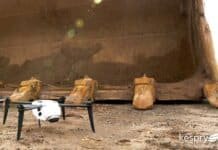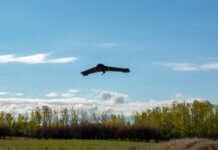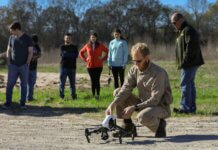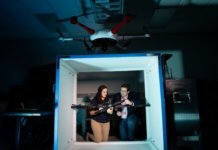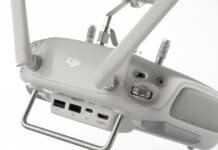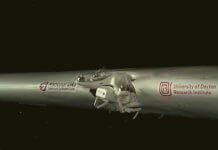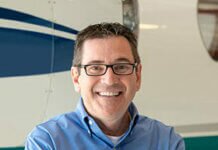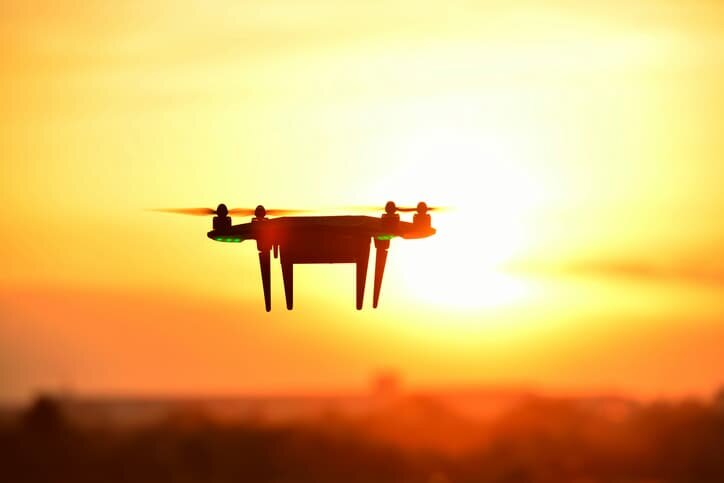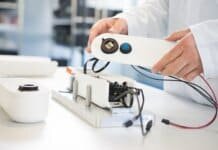Savannah/Hilton Head International Airport (SAV) in Georgia is partnering with Woolpert to integrate unmanned aircraft system (UAS) technologies into airport and airfield operations.
Woolpert’s vice president and geospatial aviation practice leader, Thomas Mackie, says the adoption of UAS to address wildlife management/hazard mitigation and daytime perimeter surveillance, which was phase one of the partnership, was completed in January.
“We took the ‘crawl, walk, run’ approach to this project,” Mackie says. “We started by coordinating with the airport leadership and operations team (engineering, security and crash, fire, rescue) and the Federal Aviation Administration (FAA) to ensure there was regional and national collaboration and buy-in, followed by a lot of research into SAV’s existing policies and technology, learning and understanding their operational routines.”
The first phase demonstrated that drones can be used safely and efficiently for routine airport operational needs, says Woolpert. The next phase involves close collaboration with key stakeholders, as well as FAA approval, with a goal to expand UAS flight operations into the airport operating area (AOA) – which was restricted in Phase I – with local air traffic control (ATC).
The purpose of the second phase is to validate the benefits of drone use to safely support additional airport missions that enhance the productivity and safety of SAV staff and operators. This phase also involves the airport’s acquiring a drone; assisting staff to become licensed Part 107 pilots; and refining the systems, sensors, processes and data management techniques most appropriate to the airport’s needs.
“The end game is for SAV to have this safe, efficient tool – with well-scripted processes – in its toolbox for use as needed. We drafted a Concept of UAS Operations for the airport, putting everything on the table – flight schedules, safety areas, risk management considerations, communication protocols,” Mackie continues. “From there, we built internal procedures and procedures with ATC; completed a safety risk management matrix for planned missions; and developed checklists, controls and responses to irregular operations. While all airports have distinct needs and directives, this guidebook illustrates how commercial airports can conceptually go about flying a drone in support of operational needs.”
Woolpert previously performed aeronautical surveys and base mapping for SAV and is in the process of implementing a Cityworks asset management system for airfield maintenance and management. That implementation went live in December and is in full operational use by SAV operations and maintenance. The next phase of work will integrate the management of SAV UAS flight operations and associated data and imagery.
“Instead of driving up and down a runway to identify pavement or marking issues, the airport will be able to use UAS to remotely collect data and create work orders with accurate coordinates and valuable imagery into Cityworks,” Mackie continues. “The additional capability with UAS will not eliminate the human-in-the-loop for airfield operations but will certainly provide an opportunity to minimize frequency and duration of time spent in safety critical areas and create valuable geodata as part of the airport’s system of records.”
Mackie notes that the need for this capability already was apparent during phase one of the project: By using a drone, the operations team identified a downed tree that had broken through a perimeter fence on the swampy north end of the airport – in a location difficult to access on foot or by watercraft. The drone collected this information safely and quickly, instantly providing the coordinates of the location and including real-time imagery of the breach.
“Savannah/Hilton Head International has done all the hard work,” Mackie adds. “It’s all about their drive to develop a formal and mature UAS operations program. They immediately saw the value in this technology, and they’re working to make it happen to the benefit of their customers, their employees and the industry as a whole.”


